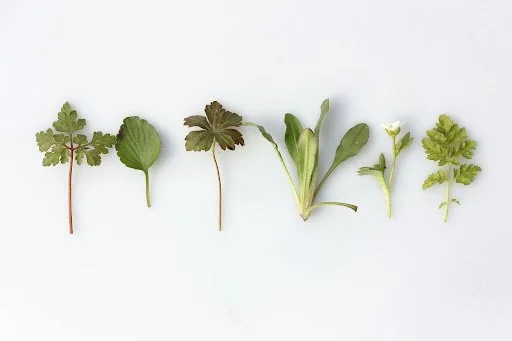Ancient Beauty Rituals Around The World
Dimitra Karagiannidi
Beauty rituals have existed throughout history, and people have sought the "fountain of youth," the "holy grail"—the method to stay youthful forever.
While beauty is recognized in many civilizations worldwide, diverse rituals and philosophies vary from one culture to the next. Fortunately, thousands of years later, these traditions have infiltrated the modern world of beauty and cosmetics, permeating our hearts and homes. Here's a look at some ancient rituals that continue to inspire us today.
Ancient Greece
Many civilizations immersed themselves in the field of beauty; for example, in ancient Greece, Aphrodite, the olympian Greek goddess of love and beauty, produced a definitive beauty ideal among Greek women, symbolizing pure femininity and grace and inspiring certain rites.
Beauty was essential in ancient Greece, not just for women but also for males. As fans of beauty, the ancient Greeks highly valued good skin, producing many valuable natural beauty suggestions.
Natural cosmetics were extensively and frequently utilized to maintain one's physical attractiveness and the health of one's skin and body.
The Greeks are supposed to have preferred pale complexions, which they used white lead, which was eventually replaced with chalk for apparent reasons (high toxicity in the information causing death). Crushed mulberries and pomegranates were popular for lip and cheek stains, charcoal, and oil for eye makeup.
Because of clay's mineral content and cleaning and anti-inflammatory characteristics, clay face masks were popular in Ancient Greece, as were honey, milk baths for smoothing skin, dried herbs and botanicals in their baths for purification, and course, olive oil for moisturizing their skin.
Olive oil was also a common cosmetic component in Ancient Greece. According to tradition, a Greek chef named Calamus made soap by combining olive oil and wood ash from Mt. Sapo so that it could be used to clean sacrificial utensils.
However, his skin softened and smoothed after washing his hands with this concoction. Olive oil has cleansing and beautifying qualities. Olive oil was such an essential component of Greek cosmetics that it is still widely utilized by Greek women today.
Roman Rituals
The Romans are well known for their bathing habits, and like the Grecians, they preferred pale, blemish-free skin by utilizing milk, honey, and animal fat, to mention a few items. Women (and occasionally men) would drown themselves in perfume and oils due to the decadent and often foul-smelling treatments frequently used on the face and in baths since a pleasant fragrance was linked with good health.
Flowers and plants such as saffron, almonds, rose petals, lilies, myrtle, laurel, and jasmine were used to create perfumes.
Many spas are inspired by Roman bathhouses, which are noted for their mosaics, murals, and elaborate ceilings bathed with natural light. Bathers participated in contrast bathing treatment, also known as hot/cold immersion therapy, a traditional practice that has resurfaced in our modern society due to the numerous scientifically supported health advantages.
The Ancient Romans also created creams and lotions to combat and conceal wrinkles, pimples, sun spots, freckles, and peeling. Lentils, barley, lupine, honey, or fennel were combined with oils, oregano seeds, sulfur, vinegar, goose fat, basil juice, and hawthorn. They occasionally used rose or myrrh essence.
Spots were treated with a mixture of barley flour and butter. In contrast, sun damage was treated with snail ashes, and a face cream famous in its day was Londinium Cream: a mixture of animal fat, starch, and tin, with other components including placenta and dung.
Egyptian Rituals
Ancient Egypt was one of the most sophisticated civilizations on the planet and the source of many holy pleasures that are still extensively utilized today. Egyptians were unquestionably famous for their exquisite jewelry and apparel.
Uncovered cemeteries have given us artifacts and information that beauty rituals were more cherished in Egypt than in any other society, with burials and tombs displaying evidence of cosmetics residues within, not to mention the numerous additional health and wellness practices unearthed over time.
Cleopatra, Egypt's last active ruler, was a timeless beauty who left behind timeless rites. Her anti-aging methods included using almond oils, dead sea salt washes, apple cider vinegar, honey, and milk baths. The Egyptians are also supposed to have developed sugaring for hair removal, which is still commonly employed today.
Perfumes were also highly regarded in ancient Egypt for their excellent health and well-being benefits. Frankincense and myrrh were widely recognized as critical elements in fragrances and skin care treatments for both aroma and health advantages, and moisturizers were a popular choice with over 21 different vegetable oils for various cosmetic reasons!
The portrayals of Egyptians and their gods with black, kohl-rimmed eyes are among the most famous images from ancient Egypt. Men and women of all socioeconomic strata applied kohl around their eyes. It was made by combining soot with galena, a blue-grey natural mineral type of lead sulfide.
It might be applied to the upper and lower eyelids using a tiny stick. A black line would then be drawn from the corner of the eyes to the side of the face, similar to the one found on Nefertiti's bust.
Kohl was one of the most popular beauty secrets in ancient Egypt. It was not only attractive, but it also protected eyes from the sun and served as a repellent to insects. It even protects against eye infections.
While large amounts of lead salts in kohl can be harmful, the Egyptians treated and filtered the ingredients for up to thirty days before use. This meant that at the time it was administered, only trace amounts of lead remained, making it safe for the eyes while still antibacterial.




